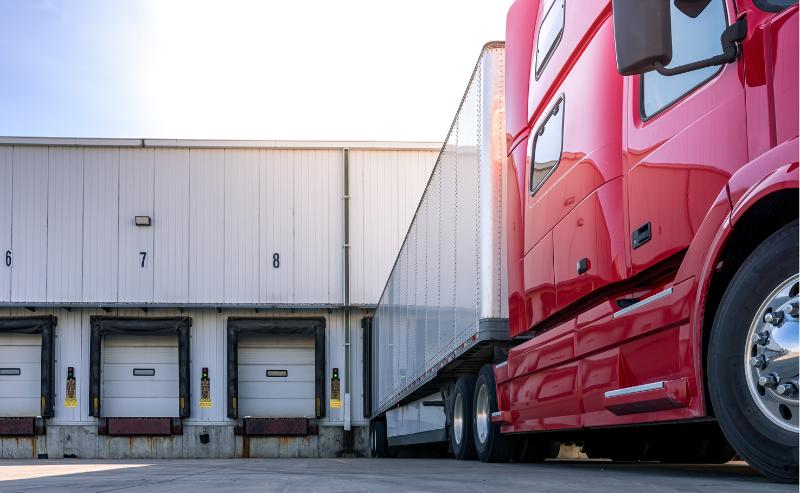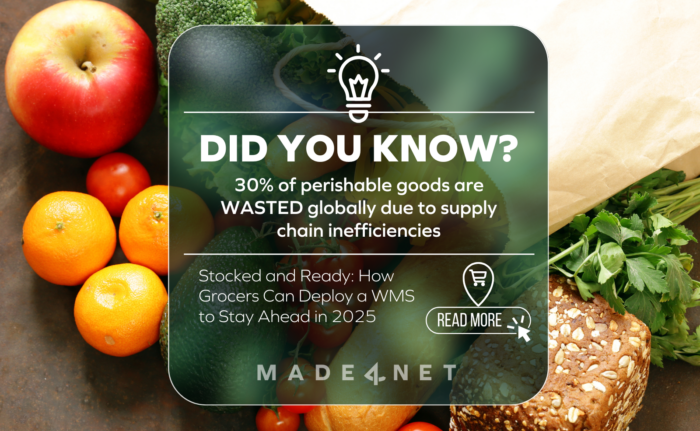
Routing is a critical component of fulfillment, which starts with that first customer order and ends when that order is delivered. For companies looking to cut transportation costs while improving customer satisfaction, digitizing manual processes and investing in route planning software is essential. So, what does delivery route planning software even do?
In this article, we’ll cover:
- What is Delivery Route Planning Software?
- Why is Delivery Route Planning Software Important?
- What are the Benefits of Delivery Route Planning Software?
- What are the Challenges of Delivery Route Planning Software?
- Key Features of Delivery Route Planning Software
- Delivery Route Planning Software Example: Made4net
What is Delivery Route Planning Software?
Delivery route planning software automates and manages the entire delivery process. It is responsible for determining which route will ensure a timely and cost-effective delivery, every time. While route planning can be complex, the right software simplifies the process, ensuring every delivery is on time and on budget.
Why is Delivery Route Planning Software Important?
Efficient route planning is the key to mastering last-mile delivery. It helps ensure customers get what they need, when they expect it, all while keeping transportation costs under control.
Today’s delivery operations demand real-time fleet visibility and dynamic data inputs to meet rising expectations. Modern delivery route planning software changes the game. With access to real-time tracking, intelligent scheduling, and dynamic rerouting based on traffic, weather, and capacity, businesses can run leaner, smarter operations.
By leveraging advanced algorithms and automation, companies can maximize delivery volume, allocate resources strategically, and keep customers happy—without breaking the bank.
What are the Benefits of Delivery Route Planning Software?
Route planning can have a significant impact on the bottom line, which is why using delivery route planning software can be such a game-changer for companies looking to stay ahead of their competition. Benefits include:
- Delivery Route Planning Software Benefit #1: Optimized Vehicle Routing
- By consolidating multiple orders en route, route optimization software can easily create alternative delivery routes to account for weather, roadblocks, detours, or accidents. It can also work around common delivery constraints, such as order specifications, vehicle types, and rider categories.
- Delivery Route Planning Software Benefit #2: Improved Driver and Fleet Utilization
- Route delivery software helps dispatchers make the most of every vehicle and driver. By assigning balanced workloads and optimizing schedules, businesses can cover more ground without overextending their teams.
- Delivery Route Planning Software Benefit #3: Reduced Transportation Costs
- Smarter routing means fewer miles, less fuel, and lower labor costs. By avoiding unnecessary detours and streamlining deliveries, companies can significantly reduce their transportation spend.
- Delivery Route Planning Software Benefit #4: Analytics and Reporting
- With access to real-time and historical data, businesses can identify inefficiencies, track performance, and make data-backed decisions to improve future delivery planning.
- Delivery Route Planning Software Benefit #5: Centralized Management
- Managing routes, drivers, schedules, and updates from one platform makes it easier to coordinate delivery operations—especially when things change on the fly.
- Delivery Route Planning Software Benefit #6: Increased Customer Satisfaction
- When deliveries arrive on time and customers stay informed along the way, it builds trust. Route delivery software makes it easier to meet expectations and keep customers happy.
What are the Challenges of Delivery Route Planning Software?
Sure, delivery route planning software simplifies fulfillment and automates various processes, but like most technologies, it comes with its own set of challenges.
- Delivery Route Planning Software Challenge #1: Managing Complex Delivery Constraints at Scale
- Route planning software is built to handle delivery windows, vehicle loads, driver shifts, and road restrictions—but complexity increases rapidly as delivery networks grow. When hundreds or thousands of deliveries must be optimized daily, even small constraint changes (like a shift in traffic patterns or a new delivery time rule) can have a cascading effect. Scaling constraint management requires clean data, constant updates, and software capable of processing vast variables quickly—making it one of the toughest challenges to get right in real-world operations.
- Delivery Route Planning Software Challenge #2: Scaling Operations to Meet Growing Demand
- As order volumes rise, traditional route planners often struggle to keep up—leading to slower processing and bottlenecks. Without scalable systems designed for heavy workloads, businesses can’t expand without compromising performance.
- Delivery Route Planning Software Challenge #3: Maintaining Real-Time Visibility
- Static routes offer no insight once drivers hit the road. Without live GPS tracking and rerouting capabilities, companies can’t react to unexpected traffic, cancellations, or emergencies, resulting in missed deliveries and unhappy customers. Even though most modern delivery route planning platforms are designed to offer real-time visibility, that capability depends on device connectivity, driver compliance, and reactive routing.
- Delivery Route Planning Software Challenge #4: Integrating with Disparate Data Systems
- Effective route planning depends on synchronized data—inventory levels, customer info, and driver schedules—but these often live in unconnected systems. Lack of seamless integration forces manual data wrangling, introducing errors and inefficiency.
Key Features of Delivery Route Planning Software
Not all systems are created equally. The ones that rise to the top as the most reliable often boast these essential features.
- Delivery Route Planning Software Feature #1: Dynamic Route Optimization
- AI-driven systems automatically group and reroute orders in real-time based on traffic, weather, or last-minute changes—ensuring drivers take the most efficient path at every moment.
- Delivery Route Planning Software Feature #2: Real-time Tracking
- Live monitoring and predictive ETAs give visibility into each delivery’s progress, helping manage customer expectations and quickly address unexpected delays.
- Delivery Route Planning Software Feature #3: Automated Driver and Vehicle Assignment
- Route planning software works to intelligently match orders to the right driver and vehicle—optimizing for capacity, location, and delivery constraints without manual intervention.
- Delivery Route Planning Software Feature #4: Resource Utilization Monitoring
- Advanced tools monitor vehicle capacity and driver performance, maximizing utilization and reducing wasted journeys.
- Delivery Route Planning Software Feature #5: Automated Alerts
- Electronic POD capture and automated alerts keep customers informed while reducing dispute risks.
- Delivery Route Planning Software Feature #6: Analytics and Reporting
- Centralized dashboards provide insights into routes, driver performance, and delivery metrics, fueling continuous improvement.
Delivery Route Planning Software Example: Made4net
Made4net’s Route Optimization solution is designed to simplify complex delivery logistics while improving service levels and reducing costs. It helps businesses plan, execute, and monitor last-mile deliveries in real time. Key features include routing, dynamic scheduling, and seamless integration with dispatch operations. Made4net also supports route adjustments based on real-world constraints like traffic, road conditions, and vehicle capacities. By aligning delivery plans with actual field conditions, companies using Made4net can boost productivity, enhance fleet utilization, and ensure consistent on-time deliveries. Find out how, talk to us.


